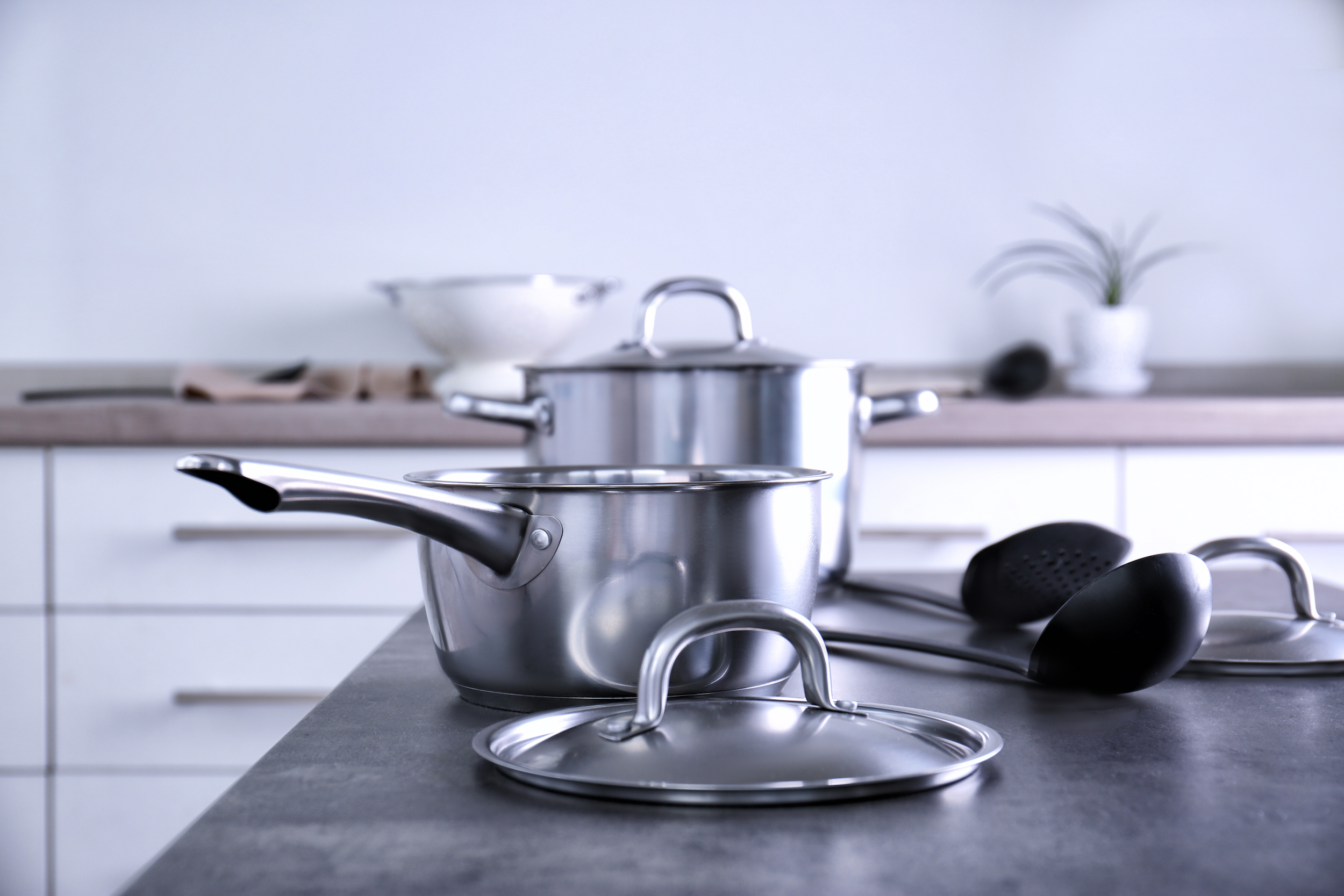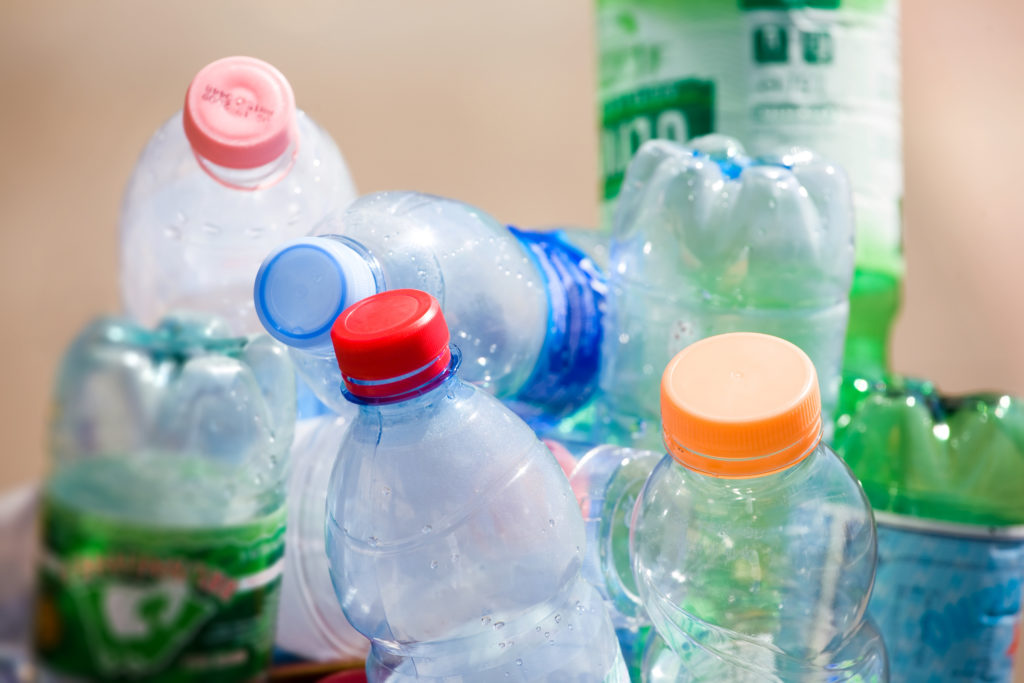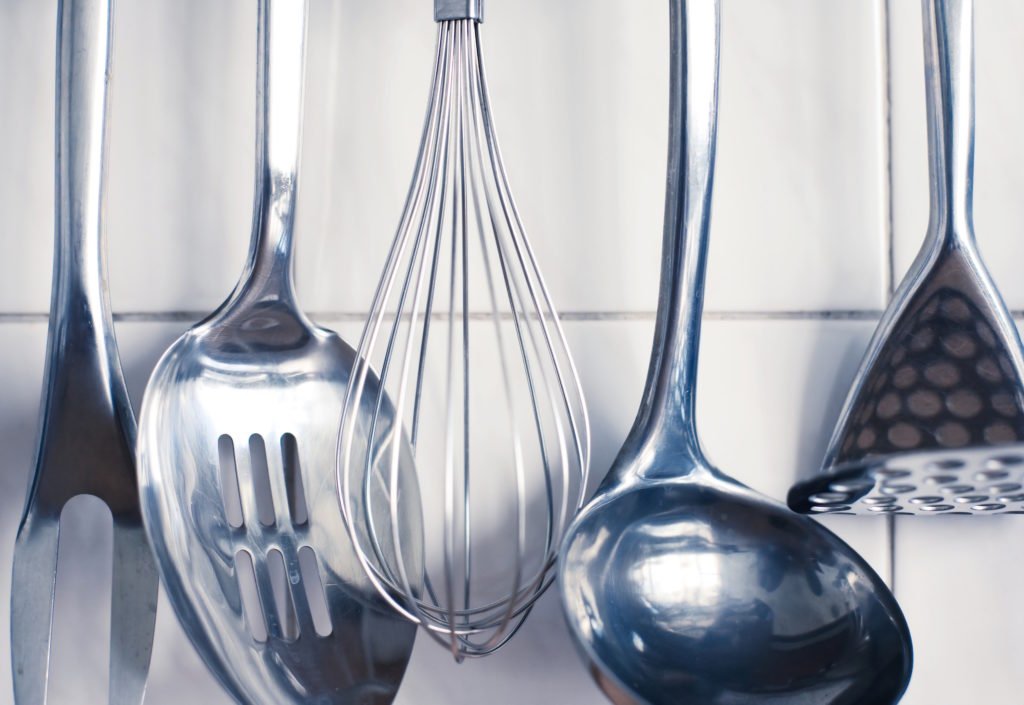
Inside this Post: Toxic chemicals hiding in your kitchen. Why the chemicals are toxic in the kitchen, what harm they cause and safe non-toxic alternatives to switch out for.
This post may contain affiliate links. You can see my disclosure policy here.
The Scary Toxins Hiding In Your Kitchen
The kitchen is known as the heart of the home.
Do you ever notice where you spend the most time with your family, friends, and during the holidays?
I know in my home, the kitchen is where we do homework, make and eat meals together, and I make lunches everyday for my kids.
You spend a lot of your time and resources to eat organic, drink plenty of water, limit processed food and ban soda. All those things are important to being healthy, but what about all the other ways toxins can invade your body through your kitchen and cooking processes?
When you spend so much of your time in this one part of your home, it’s the first place I recommend making changes because there are so many hidden chemicals that are digested, in the air, inhaled and touched without you realizing it.
Common Toxins Hiding in Your Kitchen
Here are the most prevalent toxins hiding in your kitchen; what you save your food in, what you cook your food in, what you serve food on…
These items can all be replaced with safe, non-toxic items that won’t leach chemicals into your body one way or another.
Here are the most toxic chemicals found in your kitchen, explaining where you find them, why they’re toxic and what you can safely replace them with.
PERFLUOROOCTANOIC ACID (PFOA)
Where you Find It:
Non-stick pans

Why It’s Toxic:
Non-stick is a great option for easily cooking without a messy clean-up, but the mess is that the pans are coated with Teflon, which is made of something called perfluorooctanoic acid (PFOA.)
Why is PFOA so harmful? The International Agency for Research on Cancer has classified PFOA as possibly carcinogenic to humans and it’s been linked to infertility, weight gain, and impaired learning.
All 2015, DuPont (the manufacturer behind Teflon), and seven other U.S. companies vowed to eliminate PFOA. Anything purchased after 2015 from these companies may be safe, but older pans and pots still have the chemical.
Safe Alternatives:
- The Environmental Working Group recommends using cast iron and stainless steel cookware for stove-top cooking and oven-safe glass for baking.
POLYTETRAFLUOROETHYLENE (PTFE)
Where you Find It:
Non-stick pans and Teflon products
Why It’s Toxic:
Some non-stick cookware rely on PFOA, and others are made with this synthetic polymer called polytetrafluoroethylene (PTFE). Some brands have both!
According to research, when PTFE-coated pans are heated to high temperatures, they emit gases that can be toxic.
There are warnings to avoid high heat when using this type of cookware, but when you’re in the middle of cooking dinner, it’s easy to forget this warning.
When cookware overheats, the non-stick coating on these surfaces breaks down and the toxins leach into food in just two to five minutes during stovetop cooking, according to an Environmental Working Group report.
Safe Alternatives:
- Cast iron pans, stainless steel cookware and glass bake ware are the best options without PFOA and PTFE.
ALUMINUM
Where you Find It:
Aluminum foil, throw away roasting pans and aluminum baking containers.

Why It’s Toxic:
A recent article from The Journal of Alzheimer’s Disease linked the consumption of aluminum to Alzheimer’s and other neurodegenerative diseases like Parkinson’s.
Aluminum is a widely recognized neurotoxin that inhibits more than 200 biologically important functions and causes various adverse effects in plants, animals, and humans. (source)
While our bodies secrete aluminum through urine and feces, some researchers believe that cooking with aluminum foil allows aluminum to enter the body, and accumulation of aluminum in the body can potentially damage the nervous system, kidneys, and bones.
Aluminum cookware is oxidized (a process that prevents aluminum from getting into your food), but aluminum (like aluminum foil and baking containers) isn’t oxidized so the risk of it leaching into your food under high temperatures, according to one study.
Cook acidic foods like tomatoes, meat, dairy, and vegetables oils speed up the leaching process.
It’s also smart to avoid storing acid foods in aluminum foils and temporary metal containers.
Safe Alternatives:
- Play it safe and switch to glass bakeware, ceramic bakeware, porcelain and unbleached parchment paper. If you wrap foods in aluminum foil (like potatoes) before tossing them in the oven, reach for parchment paper instead.
- For baking, ceramic coated cookie sheets work well and are PTFE/PFOA FREE and non-toxic.
BPA
Where you Find It:
Plastic water bottles, plastic storage containers, plastic food containers (milk jugs, yogurt, frozen containers, etc.), water filtering pitchers, resealable zip top plastic bag and snack bags, plastic cutting boards, trash can liners.

Why It’s Toxic:
Where do we start with all the harm BPA can do?
BPA is a hormone-mimicking chemical commonly found in plastic bottles, straws, and BPA-laced plastics like sandwich bags, cookware, and food storage containers.
BPA has been linked to cancer, decreased brain and heart health, infertility and damage to developing fetuses but it gets even more dangerous when a BPA made product is heated up.
Temperature and time are also key factors when it comes to heating food in plastic containers. “Hot foods sitting in a container for longer periods of time, will leach more,” says Gary Ginsberg, Ph.D, author of What’s Toxic, What’s Not.
A recent study from Harvard University found a connection between BPA consumption and obesity—even for people who only ingest a small amount. Storing and zapping your food in plastic can contribute to weight gain.
Safe Alternatives:
- Switch to food-grade stainless steel water bottles, glass and stainless steel drinking cups.
- Hydroflask stainless steel water bottles, Simple Modern and Klean Kanteen with the soft spout for the kids are the favorites in our home.
- Use straws at your house? Switch from plastic straws to paper or stainless steel.
- Use glass food storage containers like pyrex which has BPA-free lids, paper snack and sandwich storage bags, and reusable ziplock bags.
- The Aqua Gear BPA-free water pitch filtration system gets a lot of love in our house. The filter lasts for 6 months, the pitcher is BPA free and it removes 90% of Fluoride from municipal tap water and over 2,000% more contaminants than the leading brand-name filter pitcher, including fluoride, lead, chromium 6, chloramines, mercury, and chlorine.
- When you shop at the grocery store, avoid foods stored in plastics like milk, yogurt, cheese, dairy, lettuce, snacks, dried fruit, etc. Instead choose glass, cardboard, paper and if you buy in plastic, when you get home unwrap it and restore it.
- Ditch plastic cutting boards and choose organic and BPA-free, non-toxic cutting boards like this one.
VINYL CHLORIDE & POLYVINYL CHLORIDE
Where you Find It:
“BPA-free” plastics, cans and containers, food storage bags, and shrink wrap for storing food.

Why It’s Toxic:
“BPA-free” plastics, cans and containers, food storage bags, shrink wrap
Polyvinyl chloride (PVC) or #3 plastic is made from something called vinyl chloride, which is
recognized as a human carcinogen by the National Toxicology Program, a division of America’s National Institutes of Health.
It’s commonly found in products marked with the “BPA-Free” sticker, including cans, food storage bags and shrink wrap.
Safe Alternatives:
- Ditch storing leftover soup, fruit, vegetables and canned goods in old cans. Try to eat fresh or frozen fruits and vegetables to avoid cans.
- Avoid shrink wrap at all costs, especially for heating or reheating food.
- Instead, grab for glass food storage containers like pyrex which has BPA-free lids. We use these for food storage and the kid’s lunches.
- We’re fans of these silicone reusable ziplock storage bags.
POLYETHYLENE TEREPHTHALATE
Where you Find It:
Food storage containers like ketchup and mustard containers.
Why It’s Toxic:
If you reuse your containers for arts and crafts or a homemade creation, the materials can break down and leach carcinogenic, hormone-disrupting phthalates into your food.
A study in Environmental Health connected higher exposure to the chemical toxins with metabolic syndrome, a disease also commonly associated with increased levels of inflammation. (More on that in our special report, 14 Foods That Cause Inflammation.)
Safe Alternatives:
- Glass is always the safe alternative to plastics, so stock up on mason jars and other glass storage containers.
- These are good to storage ingredients like flour, beans, rice, etc.

PHTHALATES
Where you Find It:
Soda bottles, cheap straws and plastic water bottles.
Why It’s Toxic:
When plastic containers and straws are used over and over again, the material will wear down, causing it to leach toxic chemicals such as phthalates into your beverages.
Phthalates are what make plastics soft and stretch, and studies show the estrogen-mimicking chemicals can cause respiratory problems and developmental, learning and behavioral problems in children. Phthalates have also been linked to metabolic syndrome and inflammation.
Safe Alternatives:
- Glass bottles, stainless steel drinking cups and making the switch to paper or stainless steel straws.
- Switch pitchers to glass pitchers here on out, for safe drinking.
BROMINATED FLAME RETARDANTS (BFRs)
Where you Find It:
Plastic kitchen and cooking utensils
Why It’s Toxic:
Have a stash of plastic spoons, spatulas and food flippers in your drawers? It’s time to toss them out!
There’s a chance these cooking utensils are coated in bromine, a component in brominated flame retardants.
When expectant moms are exposed to BFRs, their babies can experience lower birth weight and length, as be born with smaller head and chest circumferences, according to a 2014 study in the journal Environment International.

Safe Alternatives:
FREEBIE ALERT
To better understand exactly what harsh toxins are lurking in your home and why they should have no place around your family – Download Your Free Starter Guide to Environmental Toxins Hiding in Your Home